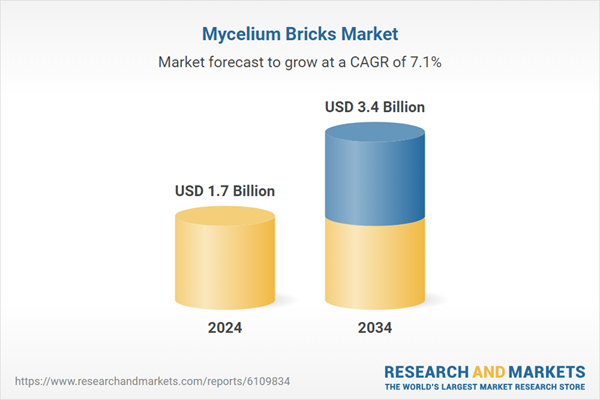This innovation not only reduces costs but also significantly lowers transportation emissions, making it a key component of sustainable construction practices. By enabling on-site production of carbon-negative insulation, it eliminates the need for long-distance transportation of bulky materials, thereby decreasing the carbon footprint associated with traditional supply chains. Furthermore, the reduction in manufacturing and transportation-related emissions contributes to greener building processes, aligning with the growing push toward low-impact, eco-friendly construction. The ability to produce mycelium-based products locally also ensures faster turnaround times and greater supply chain flexibility, while simultaneously supporting regional economies. This streamlined production approach not only improves overall sustainability but also enhances the scalability of mycelium as a viable alternative to conventional building materials.
The mycelium-agricultural waste composites segment, holding a 28% share in 2024, continues to thrive due to its cost efficiency and the ready availability of raw materials like wheat straw and corn husks in developed Asia-Pacific countries. Their seamless integration into modular panel systems and insulation applications has made them a cornerstone of eco-friendly construction projects.
The bricks and blocks segment from the mycelium bricks market accounted for a 30.1% share in 2024, favored for their standardized dimensions and robust structural qualities. These attributes make them a straightforward substitute for traditional materials, allowing builders to adopt greener alternatives without compromising established construction workflows.
U.S. Mycelium Bricks Market, valued at USD 364.7 million in 2024, benefits from a strong regulatory environment, including green building incentives and LEED certifications. The growing presence of architecture firms and innovation centers focused on sustainable design, coupled with increasing urban demand-especially from environmentally conscious younger generations-is fueling steady growth in the use of biodegradable, aesthetically pleasing mycelium bricks across the country.
Prominent players include Biohm, MycoWorks, Ecovative Design, Grown Bio, and Mogu S.r.l. Companies in the mycelium bricks industry are strengthening their position by forming research partnerships to refine cultivation and production processes, investing in R&D to improve fire resistance and structural performance, and developing scalable manufacturing systems. They’re also securing certifications (e.g., LEED, BREEAM) to enhance credibility in green construction markets, diversifying product lines with panel, insulation, and modular solutions, and pursuing collaborations with architects and builders to increase adoption. These strategies enhance market trust and ensure long-term growth.
Comprehensive Market Analysis and Forecast
- Industry trends, key growth drivers, challenges, future opportunities, and regulatory landscape
- Competitive landscape with Porter’s Five Forces and PESTEL analysis
- Market size, segmentation, and regional forecasts
- In-depth company profiles, business strategies, financial insights, and SWOT analysis
This product will be delivered within 2-4 business days.
Table of Contents
Companies Mentioned
- Biohm
- Biomyc
- Ecovative Design
- Grown Bio
- Mogu S.r.l.
- Mycel
- Mycovation
- MycoWorks
Table Information
| Report Attribute | Details |
|---|---|
| No. of Pages | 220 |
| Published | June 2025 |
| Forecast Period | 2024 - 2034 |
| Estimated Market Value ( USD | $ 1.7 Billion |
| Forecasted Market Value ( USD | $ 3.4 Billion |
| Compound Annual Growth Rate | 7.1% |
| Regions Covered | Global |
| No. of Companies Mentioned | 8 |








